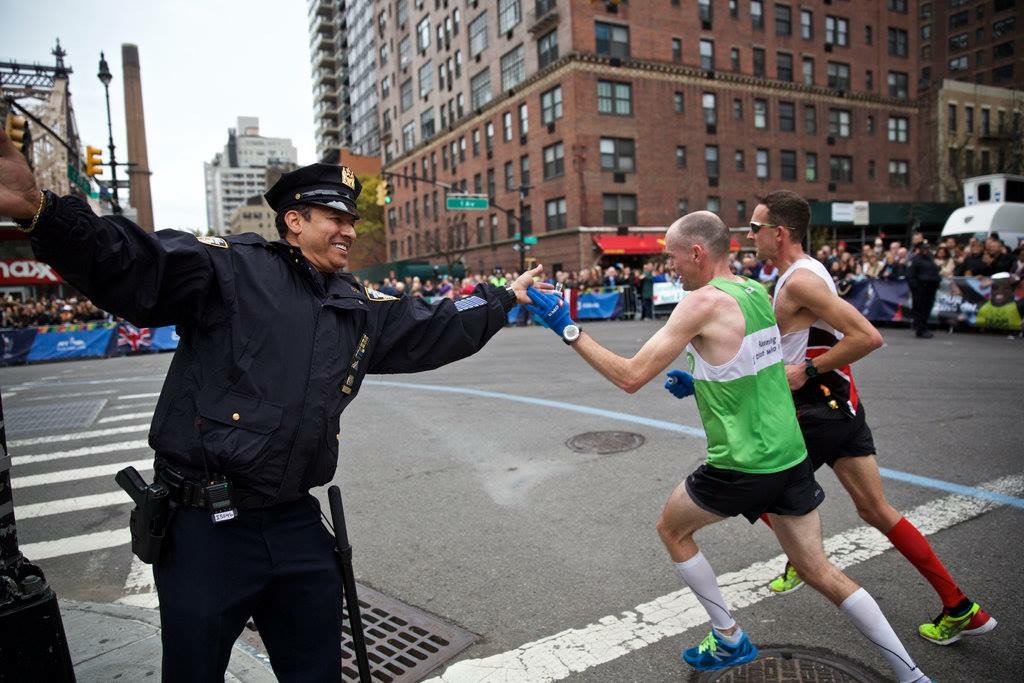Tom McGrath; the trials and tribulations of a Canadian sub-elite marathoner

The juggle of balancing 100-mile weeks with 50-hour work weeks to break out of mediocrity
Tom McGrath, a native of Edmonton, Alt., was the top Canadian finisher at the TCS New York City Marathon on Nov. 1. We caught up with him to discuss the adversity he’s faced to get to this level, how he manages to balance work and running, and where running may take him in the future.
McGrath’s seven-year marathon progression from 3:20:33 to 2:28:48:
Canadian Running: What’s your background in running? Were you an athlete in university?
Tom McGrath: I started running in 2002 as part of grade 11 cross-country after being convinced by a friend to start. When I transitioned to university, I ran my first 10K at tryouts for the University of Alberta and wasn’t close to making the team. I was allowed to run on the development team but quit after a few weeks. In 2006, my friend dared me to race a marathon and I finished in 3:20, just off a Boston qualifying time. I’ve been hooked ever since.
CR: You’re situated between elite and sub-elite. Are you looking to bridge the gap by living the “runner’s dream” and committing to it full-time?
TM: If you asked me that question a few years ago, a younger, more naive me would have answered differently. In 2009 I had a lifetime best of 2:47 from the NYC Marathon and began learning what real training was all about, rather than finishing online programs and reading books. I improved to 2:31:17 in 2012 without a girlfriend and an overbearing job and thought something could come of it.
But since 2012, my marathon time has only improved to 2:28:48. There have been countless 100-mile weeks. The 2:18 I thought was in the cards looks increasingly out of reach. Now that I have a serious girlfriend and a career, I’m very happy with my hobby, which has changed my life immensely.
CR: You mentioned you have a serious career. How do you deal with the work-life balance?
TM: I work full-time for Baker Hughes as an afternoon shift supervisor. Working 12:30 to 11 p.m. allows us to get our training in before work. I met my training partner Chris Stone (1:11 & 2:34) when I first started this job and we continue to train together to this day.
Working 50-hour weeks and running 100-mile weeks doesn’t leave a lot of spare time. Throughout the week, every minute matters, and I don’t have any time to waste. Weekends are spent training and spending as much time as possible with my girlfriend since we don’t see each other at all during the week.
CR: There aren’t many Canadian athletes between 2:20 – 2:30. What kind of sacrifices do you make to get to that level?
TM: Time with the girlfriend is the biggest one, but fortunately she is very understanding of my needs and my drive for running. She’s a runner herself, having run her first marathon a few months ago in Edmonton. I skip out on a lot of outings because of training and time constraints and most of my friends are runners. That said, I wouldn’t trade the friends I’ve made through running for anything. I also don’t spend as much time with my family as I should due to training.
RELATED: Edmonton Marathon highlights
CR: How did you get involved with The Running Room?
TM: I was fortunate enough to be introduced to Matt Norminton in 2011 who had just started coaching and was once one of Canada’s top runners. After about a year I was given a Running Room singlet and was happy to wear it. Once the results trickled in I was invited to become one of their sponsored athletes. I’m very proud to wear The Running Room colours and I know the Stanton family quite well. Both Matt and the Stanton’s have been very good to me and I can’t thank them enough for their support.
CR: It looked like you were pumping up the crowd during the NYC marathon as per some of the photos. Was the crowd receptive?
TM: Not being at the front of the race leaves the guys running between groups in a weird spot. It’s fun to get the crowd going over the course of 26.2 miles. When you’re in a really bad spot mentally all it takes is a few waves of the arms and the crowd starts screaming and suddenly you can push a little harder. I also enjoy getting the crowd going when I’m near wheelchair racers who might be struggling or going uphill to give them a boost.
CR: What are your end goals in this sport?
TM: I have a few end goals with running including running 100 marathons (81 to go), run a marathon on all seven continents (only have North America and Asia so far) and I would also love to be the first person to run all six World Marathon Majors in under 2:30. I’m one-sixth there and expected to do it in New York but to no avail. The plan seems to be getting delayed more and more considering I’ve been a minute off in Chicago, NYC, and Boston.
CR: Any quirky pre-race rituals that get you prepared for competition?
TM: I have four. My bib has to be pinned on perfectly straight (this always take multiple tries). I always have to get a pre-race haircut. I always race marathons in brand new socks. On race morning I always wake up to the Top Gun theme song.
This interview has been edited for clarity and brevity.



